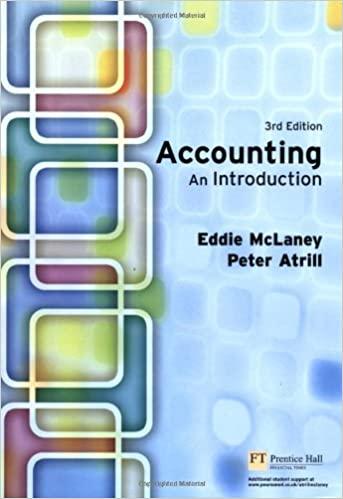Question
Along the Nile River in Egypt, irrigation farming is practiced for the production of cotton, maize, rice, sorghum, full and short Exercises 175 berseem for
Along the Nile River in Egypt, irrigation farming is practiced for the production of cotton, maize, rice, sorghum, full and short Exercises 175 berseem for animal production, wheat, barley,horsebeans,andwinterandsummer tomatoes. Cattle and buffalo are also produced, and together with the crops that require labor, water. Fertilizer, and land area (feddans). Farm types or management practices are fairly uniform, and hence in any analysis of irrigation policies in this region this distinction need not be made. Given the accompanying data develop a modelfordeterminingthetonsofcropsand numbers of animals to be grown that will maximize (a) net economic benets based on Egyptian prices, and (b) net economic benets based on international prices. Identify all variables used in the model. Known parameters: Ci miscellaneous cost of land preparation per feddan PE i Egyptian price per 1000 tons of crop i PI i international price per 1000 tons of crop i v value of meat and dairy production per animal g annual labor cost per worker fP cost of P fertilizer per ton fN cost of N fertilizer per ton Yi yield of crop i, tons/feddan a feddans serviced per animal b tons straw equivalent per ton of berseem carryover from winter to summer rw berseem requirements per animal in winter swh straw yield from wheat, tons per feddan sba straw yield from barley, tons per feddan rs straw requirements per animal in summer lN i N fertilizer required per feddan of crop i lP i P fertilizer required per feddan of crop i lim labor requirements per feddan in month m, man-days wim water requirements per feddan in month m, 1000 m3 him land requirements per month, fraction (1 = full month) Required Constraints (assume known resource limitations for labor, water, and land): (a) Summer and winter fodder (berseem) requirements for the animals. (b) Monthly labor limitations. (c) Monthly water limitations. (d) Land availability each month. (e) Minimum number of animals required for cultivation. (f) Upper bounds on summer and winter tomatoes (assume these are known). (g) Lower bounds on cotton areas (assume this is known). Other possible constraints: (a) Crop balances. (b) Fertilizer balances. (c) Labor balance. (d) Land balance.
Step by Step Solution
There are 3 Steps involved in it
Step: 1

Get Instant Access to Expert-Tailored Solutions
See step-by-step solutions with expert insights and AI powered tools for academic success
Step: 2

Step: 3

Ace Your Homework with AI
Get the answers you need in no time with our AI-driven, step-by-step assistance
Get Started


